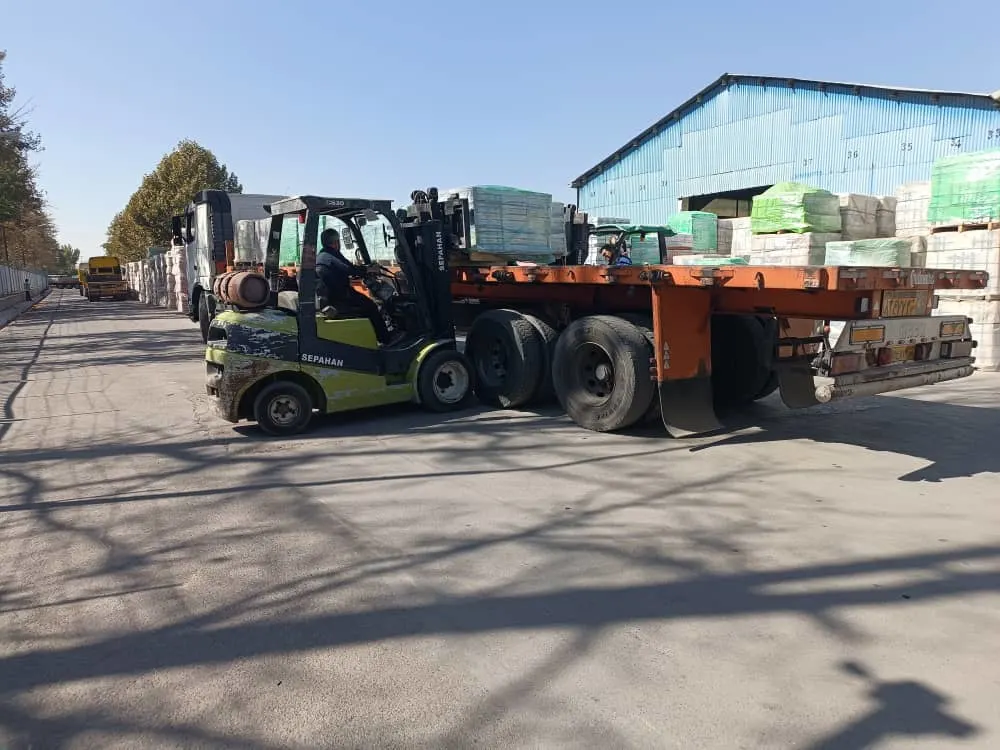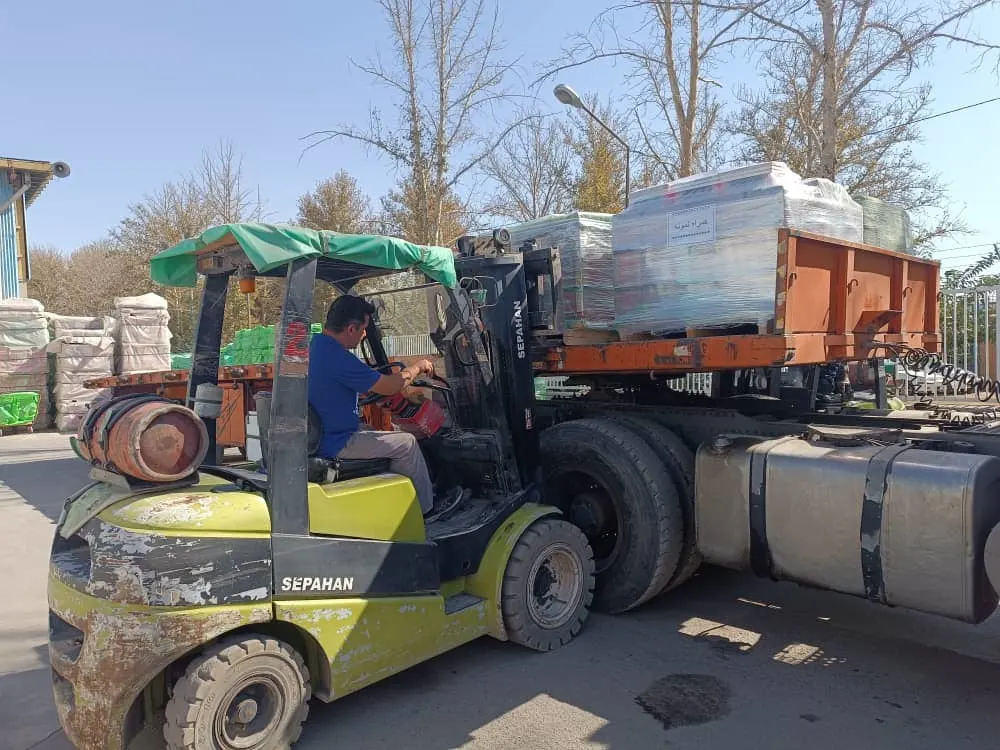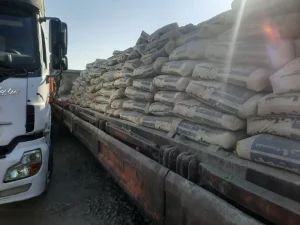Tiles and ceramics, as widely used building materials, require careful handling during transportation to preserve their quality. Although the export and transportation of steel beams involve different materials, similar principles apply when preparing for the transportation of tiles and ceramics.
In this guide, we will go step by step through the preparation process for transportation of tiles and ceramics and highlight key tips to prevent damage. The export and transportation of steel beams can serve as a model for managing delicate cargo such as tiles and ceramics, as both require strong packaging. By focusing on the export and handling of steel beams, we can draw valuable lessons for tile and ceramic transportation.

Importance of Preparation in Tile and Ceramic Transportation
Proper preparation for the transportation of tiles and ceramics prevents breakage and damage. The export and transport of steel beams show that lack of planning increases costs. Because tiles and ceramics are fragile, they require protective layers.
While steel beams are often handled with heavy equipment, tiles and ceramics need shock-absorbing materials. Without proper preparation, transporting tiles and ceramics can lead to financial loss. The export and movement of steel beams remind us that safety must come first.
Steps for Packing Tiles and Ceramics
Packaging is the first step in preparing for the transportation of tiles and ceramics. The export and shipping of steel beams require anti-rust coatings, similar to waterproof protection for tiles and ceramics.
Choosing the Right Packing Materials
For tiles and ceramics, use multi-layered cartons. Steel beams are often transported on wooden pallets, which are also useful for tile and ceramic loads. Foam sheets or bubble wrap help absorb impact. While steel beams are secured with metal chains, plastic straps are enough for tiles and ceramics. Selecting proper materials for tile and ceramic transportation is essential — the export of steel beams offers a model for packaging durability.
Layering and Securing the Load
Arrange tiles and ceramics layer by layer with foam between them. Steel beams are tightly secured to maintain balance; the same approach applies to tile and ceramic transportation. Use strong adhesive tape to fix boxes firmly. Improper securing, as seen in beam exports, can cause accidents. Cover pallets with stretch film to stabilize them. The weight management used in beam transport helps balance ceramic and tile loads.

Choosing the Right Vehicle for Tile and Ceramic Transportation
The choice of vehicle plays a major role in the transportation of tiles and ceramics. While steel beams are usually carried by heavy trailers, tile and ceramic loads need vehicles with stable suspension systems.
Road Transportation
For short distances, covered trucks are ideal. Steel beams may use flatbed trucks, but tiles and ceramics need vehicles designed to minimize vibration. Preparation for tile and ceramic transportation should include route inspection. Just as steel beams require careful turning management, tiles and ceramics must be protected from shaking. Beam export standards serve as a model for road safety.
Rail and Sea Transportation
For long distances, rail transport is the most economical. Steel beams are often shipped by rail to reduce costs. For tiles and ceramics, waterproof containers are essential. Steel beams use special wagons, while tiles and ceramics must be protected from moisture during sea transport. Since humidity is a major challenge, waterproof coatings are mandatory.

Safety Measures in Tile and Ceramic Transportation
Safety is a top priority in preparing for the transportation of tiles and ceramics. Like steel beam exports, high safety standards must be maintained.
Worker Training
Drivers and loaders should be trained in proper handling. The export and loading of steel beams require expertise; the same applies to tiles and ceramics to prevent cracking. Safety checklists, similar to those used in steel beam transport, help reduce risk. Workers must calculate the total weight accurately — a key lesson learned from beam logistics.
Use of Tracking Technologies
GPS is highly effective for cargo tracking. Steel beam transport uses smart sensors; similarly, IoT systems can monitor temperature and humidity for tiles and ceramics. Real-time tracking helps cut costs and ensure safety. For tiles and ceramics, vibration alerts are especially useful. Technology-based monitoring, as seen in beam exports, enhances overall security.

Challenges in Preparing Tile and Ceramic Transportation
One of the biggest challenges is the fragility of tiles and ceramics, while steel beams face weight-related issues.
Cost Management
Packaging costs for transportation of tiles and ceramics can be high. Optimized transport solutions, similar to steel beam logistics, can make the process more economical. Choosing cost-effective suppliers helps reduce expenses. Long-term shipping contracts, often used in beam exports, are another way to save. Combining various transport methods also reduces costs.
Environmental Concerns
Transportation must be sustainable. Steel beams are often shipped using fuel-efficient vehicles. For transportation of tiles and ceramics, using recyclable materials and eco-friendly methods is key. Green logistics not only reduce emissions but also build brand reputation. Steel beam transport highlights how sustainability leads to competitiveness.

Benefits of Proper Preparation for Tile and Ceramic Transportation
Proper preparation for transportation of tiles and ceramics ensures safe delivery and customer satisfaction. Like steel beam export, it leads to economic advantages.
Increased Customer Satisfaction
Undamaged tiles and ceramics build trust and loyalty. Timely delivery and preserved quality are key aspects of success. The export and transport of steel beams show that reliability brings repeat business; the same applies here. Well-prepared tile and ceramic shipments improve reputation and customer confidence.
Business Growth
Effective preparation for transportation of tiles and ceramics enhances export potential for this market. Just as steel beam transport opens new markets, quality handling of ceramics promotes growth. Meeting international standards expands opportunities for export. Focusing on quality, safety, and innovation leads to long-term business development.
Conclusion
This guide to preparing for the transportation of tiles and ceramics shows that with careful planning, challenges can be managed effectively. The export and handling of steel beams offer valuable lessons in safety, packaging, and logistics. By emphasizing proper packaging, technology, and planning, tile and ceramic transportation can be optimized for success. Ultimately, preparation is the key to achieving efficient, safe, and profitable delivery.


